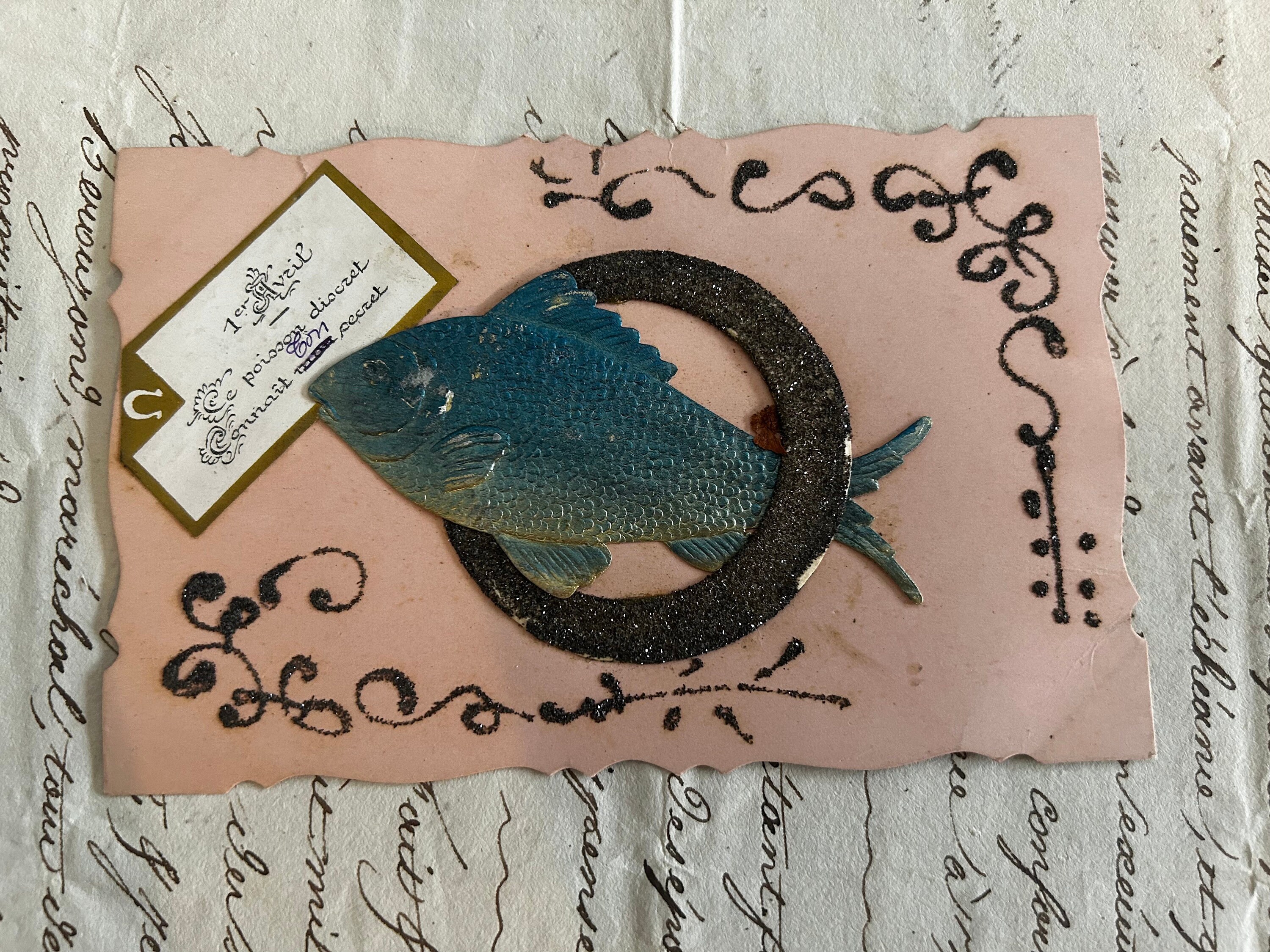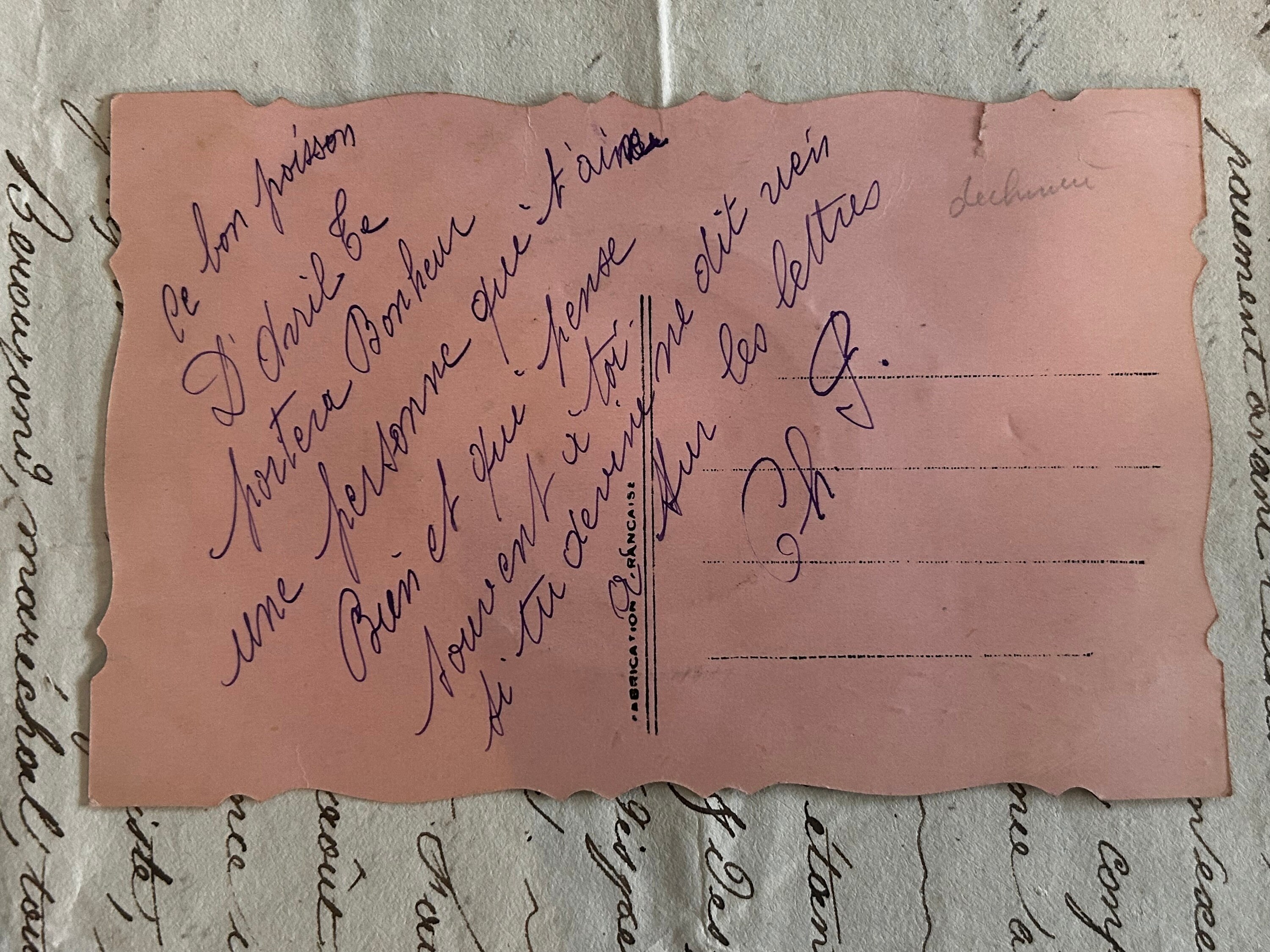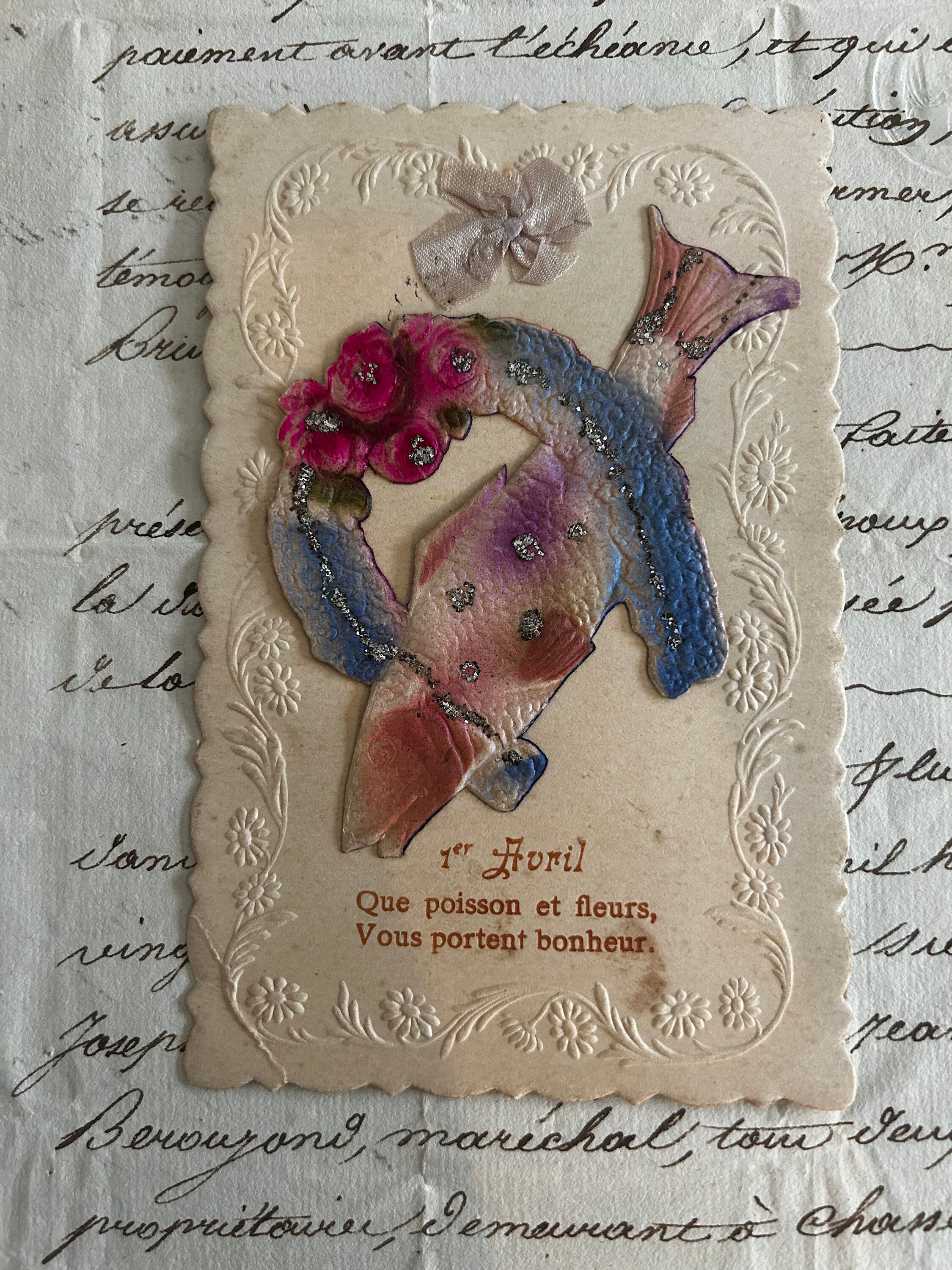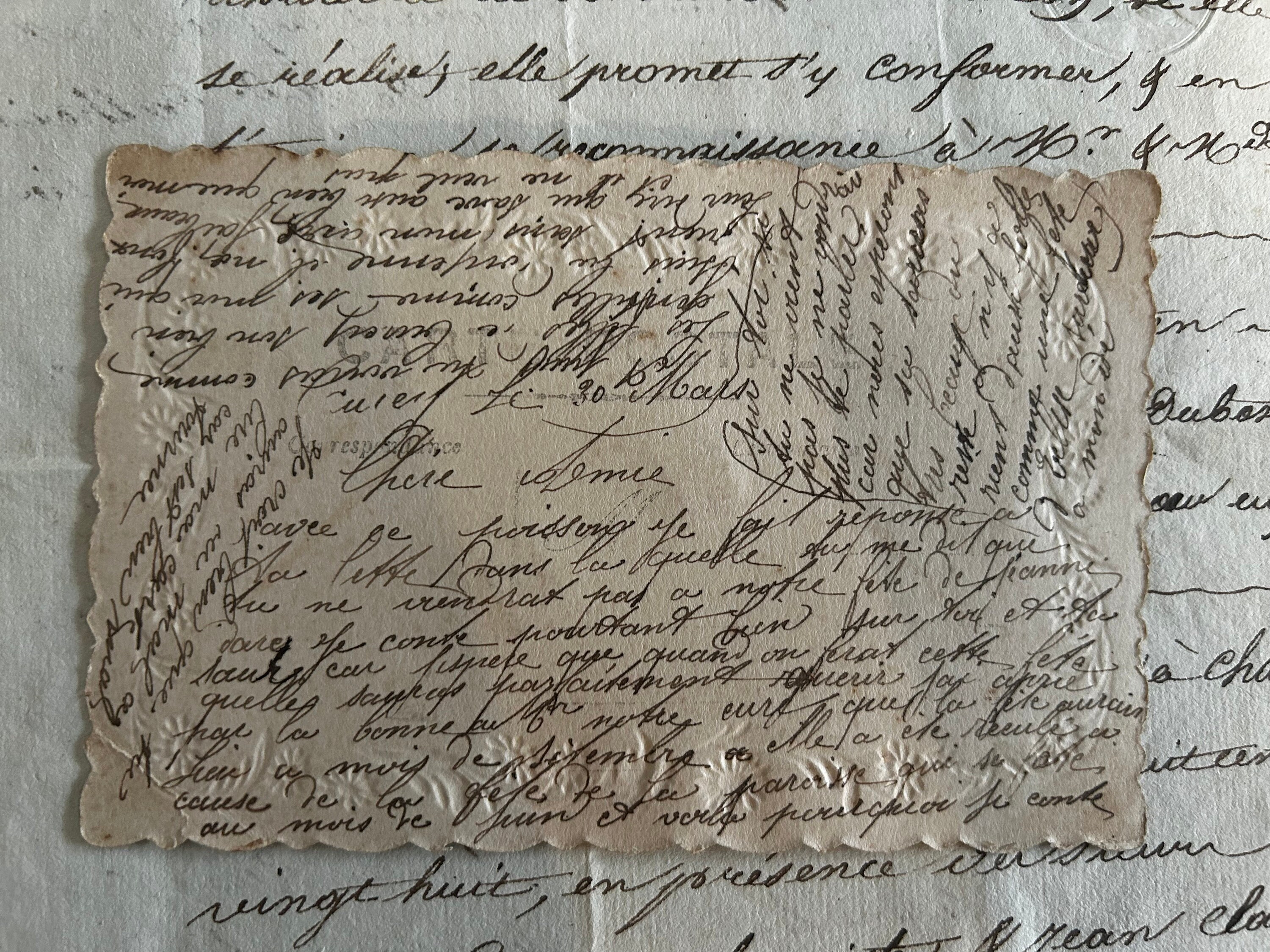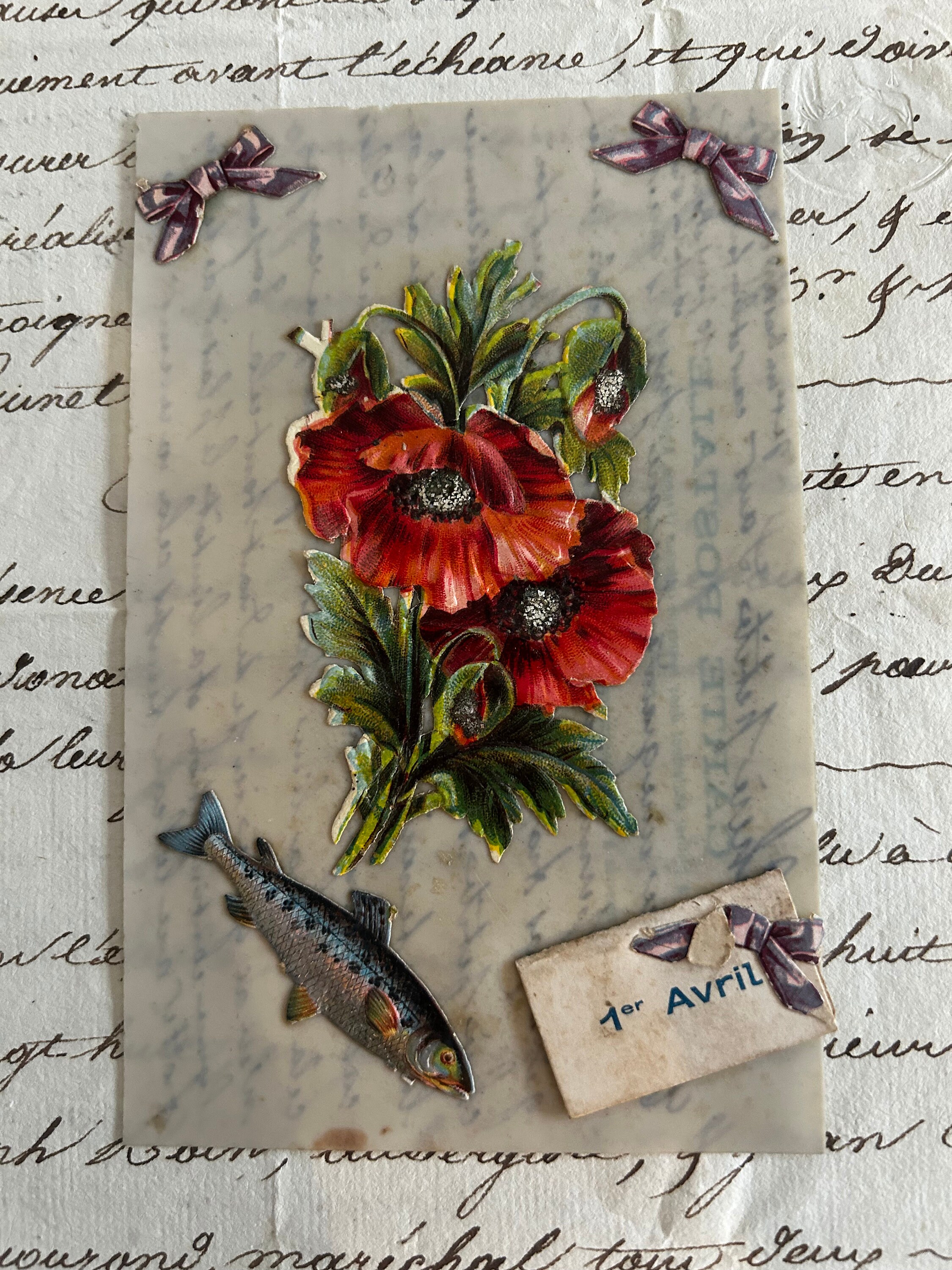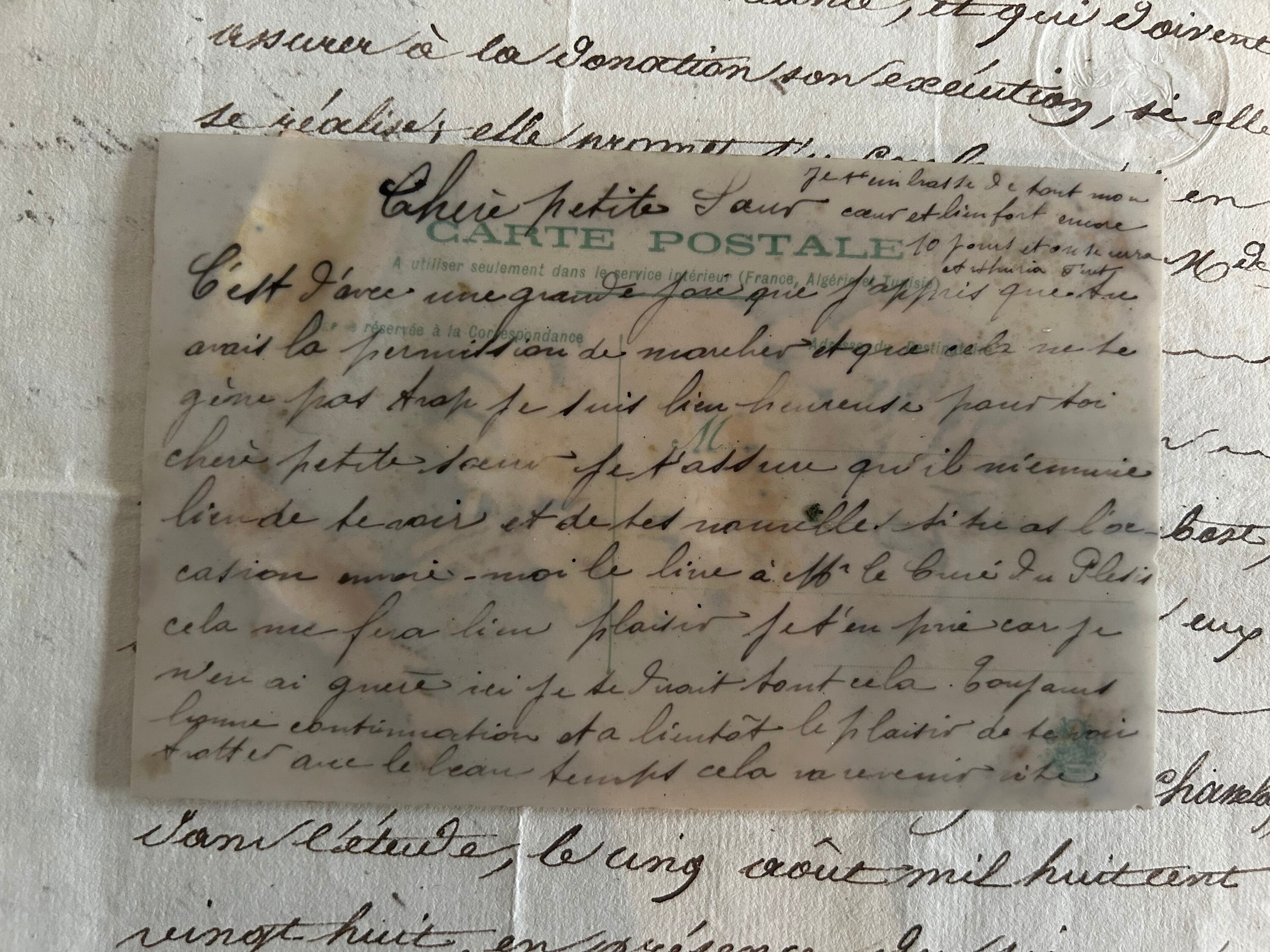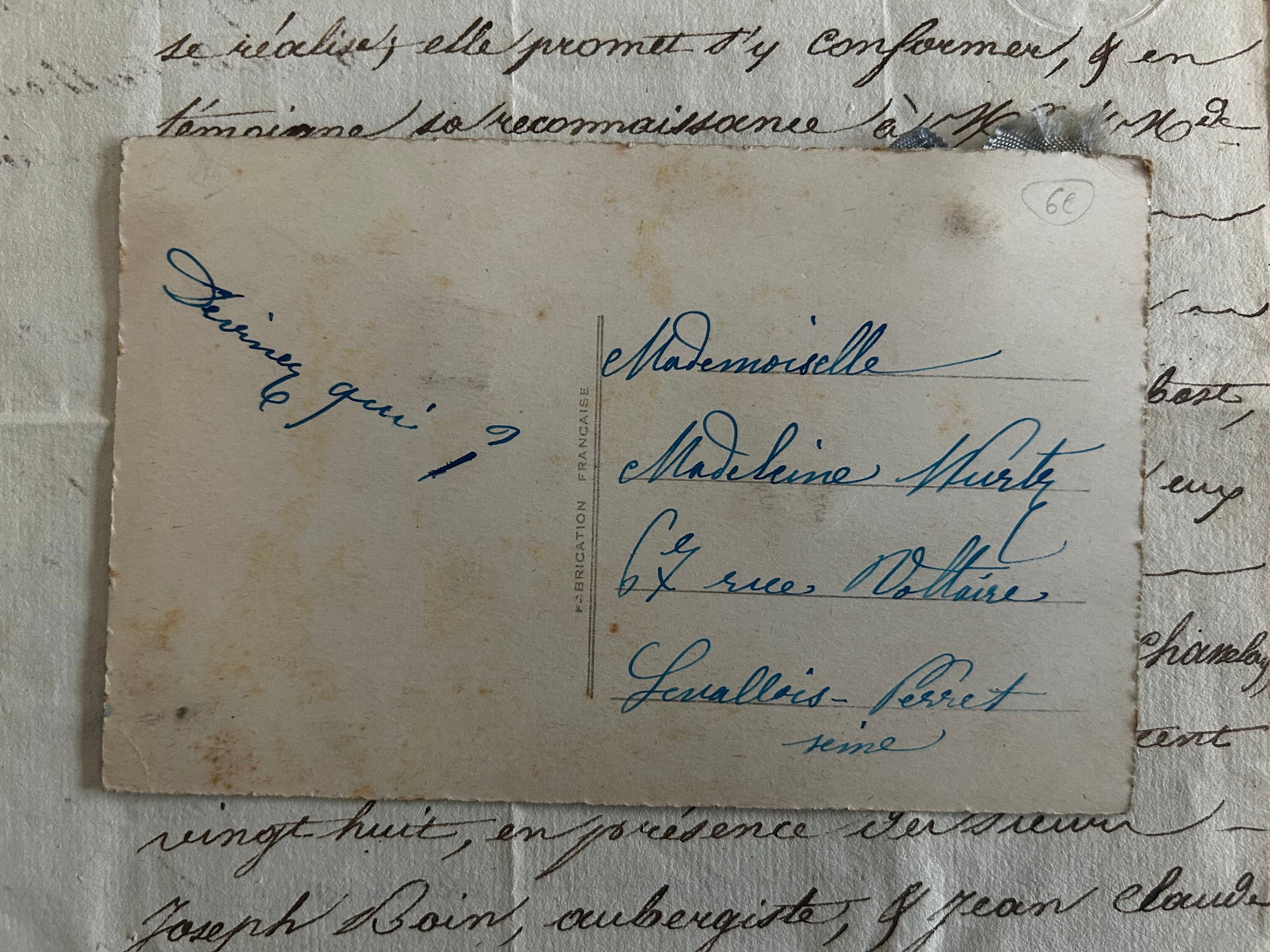There are four, French, April Fool's (Poisson d'Avril) postcards available at the time of this listing, circa 1920s-1930s, and they are priced individually. Please use the dropdown box to choose the postcard(s) you would like to purchase.
The four postcards (and their sizes) available at the time of this listing are:
SOLD 1) Blue Fish, 5 ⅜" x 3 ½" SOLD
SOLD 2) Horseshoe 5 ½" x 3 ½"SOLD
3) Celluloid 5 ¼" x 3 ½" (Please note that this postcard is made of celluloid with paper embellishments.)
SOLD 4) Gold-Colored Fish 5 ½" x 3 ½" SOLD
****Condition. Please note that each postcard is depicted in two photos, and each has areas of wear that may include (but are not limited to) missing paper, small rips, fraying ribbon, folds and creases, discoloration, and edge wear. Please examine the photos carefully and do let me know if you need more as I'll be happy to oblige.
In France, April Fool's Day has long been associated with the symbol of a fish, and it is known as Poisson d'Avril.
I've included this long but interesting piece from Atlas Obscura about Poisson d'Avril. They write, "The most common theories are connected to pagan celebrations of the vernal equinox, Christianity, a 16th-century calendar change, and the start of the French fishing season.
Some historians date this tradition back to the Ancient Roman pagan festival of Hilaria, a celebration marking the vernal equinox with games and masquerades. Santino says ancient Roman and Celtic celebrations of the vernal equinox are likely forerunners. Connections to those rituals “provide a kind of cultural vocabulary that people can draw on,” according to Santino. However, he believes they probably don’t have a direct connection to the fish part.
For some, that’s where Christianity comes in. The “ichthus” fish—an ancient Hellenic Christian acronym for “Jesus Christ, Son of God, Savior”—is nowadays widely recognized as a symbol of Christianity, but was originally used as a secret marker of Christian affiliation. Moreover, the Lenten forty-day period between Ash Wednesday and Easter Sunday prohibits the consumption of meat, so fish is often served as a substitute protein during this period.
As the end of Lent often occurs on or near April 1, celebrations including fish imagery would be apt to mark the end of the fasting season. Some even go so far as to surmise that poisson d’avril is a corruption of the word “passion,” as in “passion of the Christ,” into “poisson,” the French word for fish. Despite these cultural associations, Santino points out there is no actual evidence for this link to Christianity.
Then there’s the popular calendar change theory that has been widely discounted by experts today, but still comes up. In 1564, King Charles IX of France issued the Edict of Roussillon, which moved the start of the calendar year from somewhere in the period of March 25 and April 1 (different provinces kept their own calendars) to January 1.
Pope Gregory XIII standardized January 1 as the beginning of the calendar year throughout the entire Christian empire with the adoption of the Gregorian calendar in 1582. One might surmise that those who still observed the start of the new year on April 1 rather than January 1 were the “April Fools” in question and therefore subject to pranks. However, references to poisson d’avril predate the 1564 edict, occurring in print as early as 1466, which debunks this explanation.
Another plausible theory involves actual fishing. As the days get longer in the northern hemisphere, the return of spring also marks the beginning of the fishing season in France, on or near the first day of April. Some posit that the prank of offering a fish was to tease fishermen who, at this time, either had no fish or an incredible abundance. They would either have to wait around for spawning fish to be of legal size before catching them or, once it was finally time, they would be overwhelmed by catching so many fish rushing upstream. According to this theory, real herrings were the original sea critter of choice for the prank, and the trick was to hook a dead herring onto a fisherman’s back and see how long it took him to notice, as the fish began to progressively stink over the course of the day.
The poisson d’avril tradition took another turn in the early 20th century, when friends and lovers would exchange decorative postcards featuring ornate images of fish. The majority of these cards were inscribed with funny rhyming messages that were often flirtatious and suggestive, but cloaked in humor. While most cards depict young women, flowers, and fish, the ocean and other marine animals are occasionally featured, as well as references to advances in technology, such as airplanes and automobiles. Pierre Ickowicz, chief curator of the Château de Dieppe Museum in Normandy, which houses an impressive collection of these cards, says the card exchange tradition seems to have died out shortly after World War I. The museum’s 1,716 postcards are mainly from the 1920s-1930s.
These days in France, the most common observers of poisson d’avril are schoolchildren, who delight in taping paper fish to the backs of their siblings, classmates, and teachers. Although the execution has varied over time, from dead herring accessories to postcards to paper fish, the prankster nature has been consistent.
'This idea of playing pranks on people is something that would be obnoxious if it weren’t socially condoned on certain days,' says Santino. He notes that times of transition are often connected to rites of passage where societal rules can be broken. 'If poisson d’avril has to do with a recognition of springtime, I would link it to the idea of a celebratory transition into a new period of time, and part of that celebration means we can do things that are not usually allowed.'
Today, people celebrate poisson d’avril in both neighboring Italy and in Quebec, Canada, a former colony of France. The exact origins remain murky, but the fish endures. Whether or not you participate in any kind of trickster behavior on the first of April, there’s surely some relief today that an actual dead, stinky fish is no longer a regular part of April Fool’s day—or at least hopefully that bit of history doesn’t plant any devilish ideas.
Thank you for looking.
Returns & Exchanges
I gladly accept returns, exchanges, and cancellations
Just contact me within: 3 days of delivery
Ship items back to me within: 7 days of delivery
Questions about your order?
Please contact me if you have any problems with your order.
Reviews (1)
Average:
Apr 5, 2024
Absolutely beautiful piece! Well packaged too!
